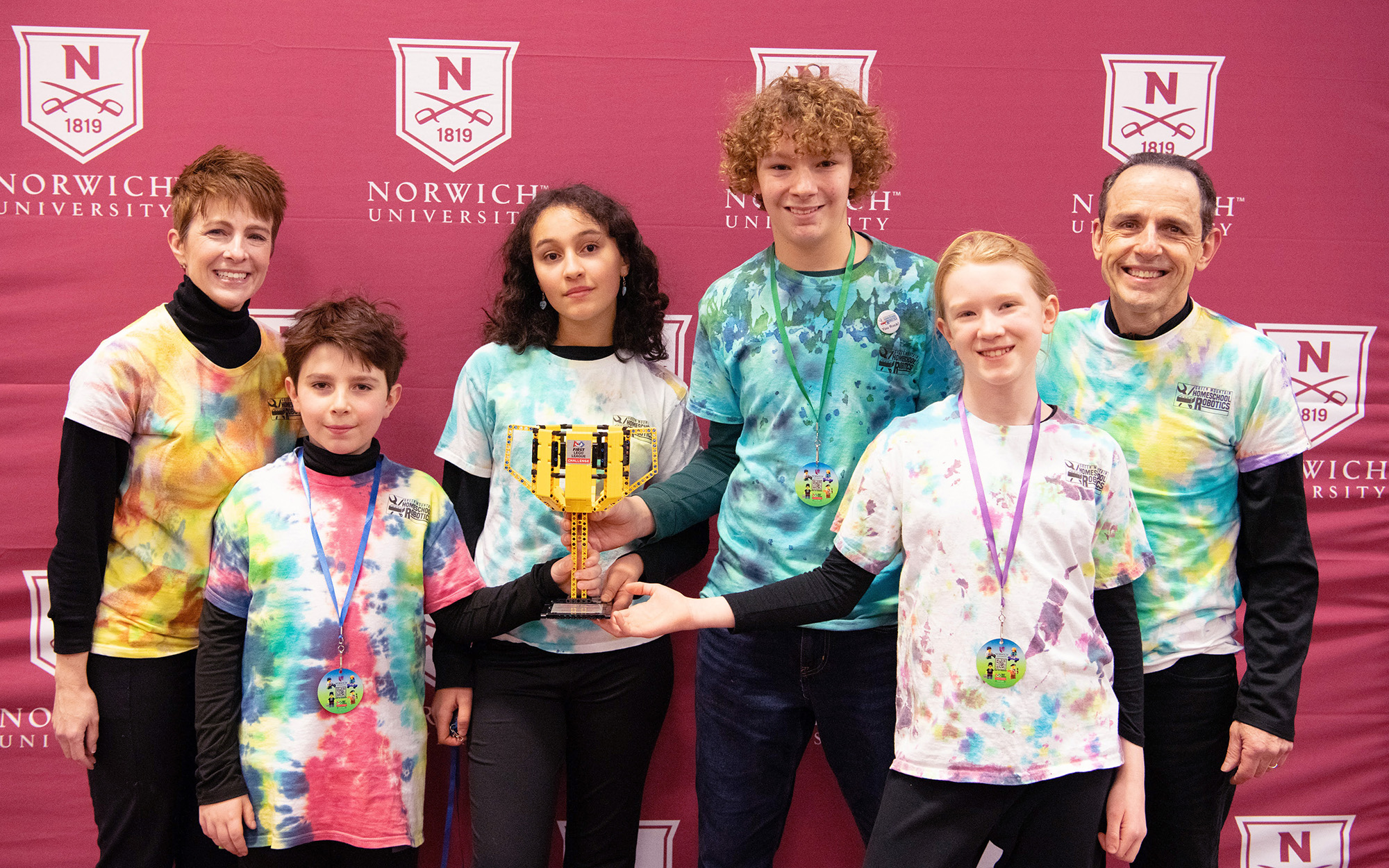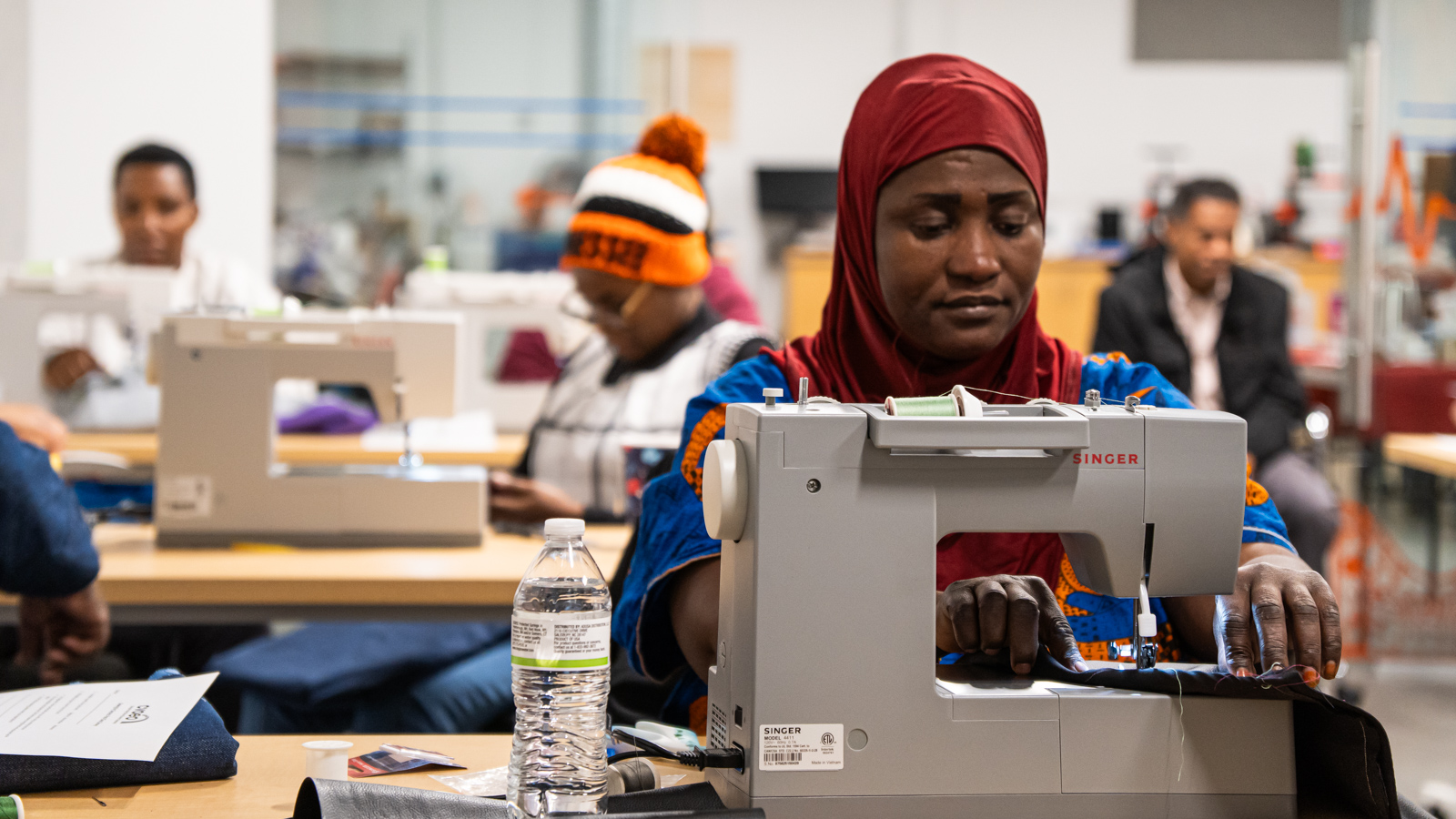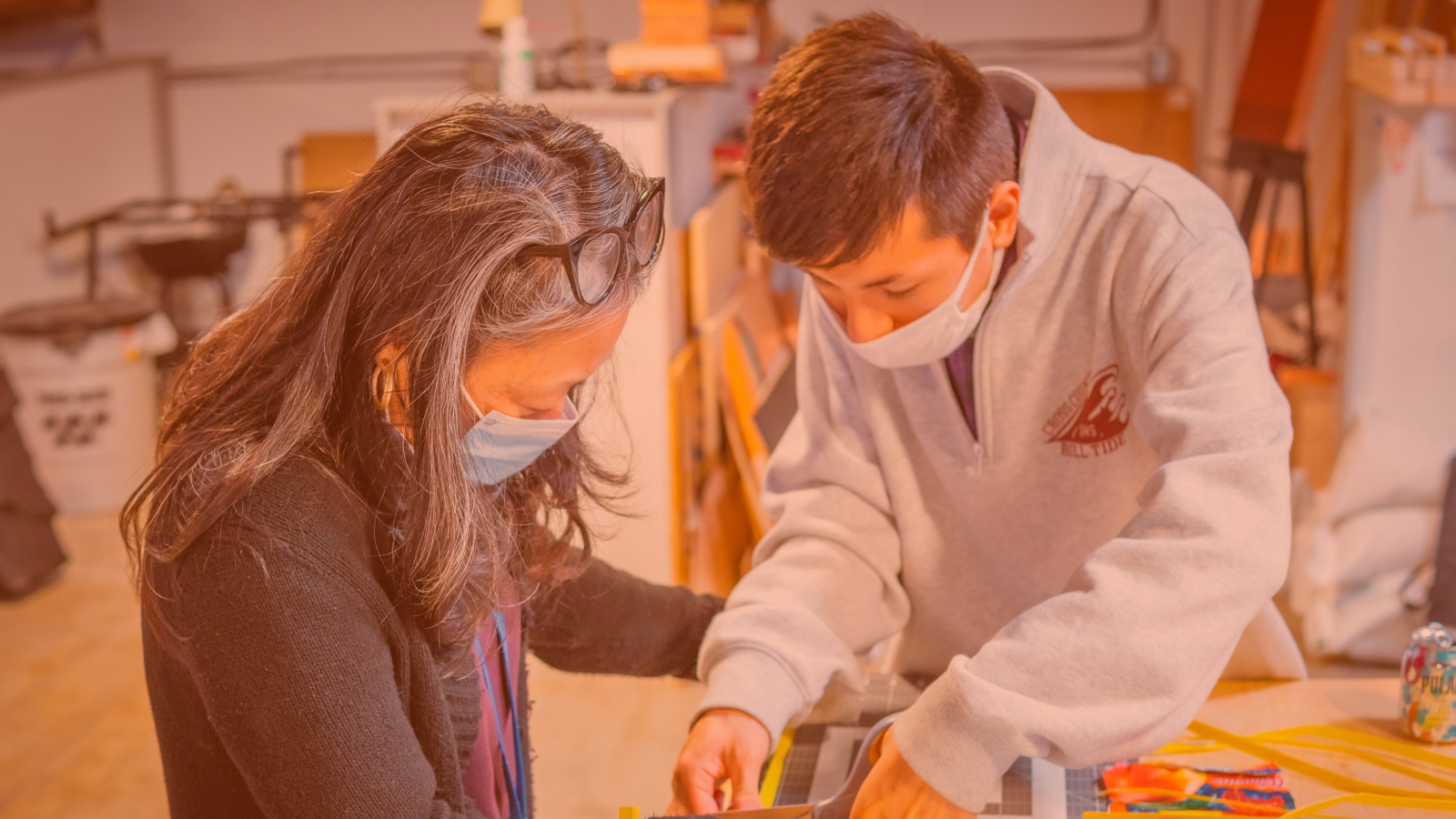Here at Generator we host Green Mountain Robotics, a regional robotics team comprised of Chittenden County high school students that competes in the FIRST Robotics Competition (FRC). But did you know that you don’t have to wait until high school to get involved in robotics?
FIRST Lego League is another option for students interested in science, technology, engineering, and math, and they offer multiple programs for students ages 4-16. A growing number of communities are coming together to form teams, and we had the chance to check in with Green Mountain Homeschool Robotics (GMHR), a team located in Williston that represents families in Chittenden County. GMHR has seen a lot of success in the two years they have been around, recently winning the State Championships. Now, they are preparing to head to the World Championships in Houston, TX in April. Continue reading to learn more about GMHR and how you can help support their world championship dreams!
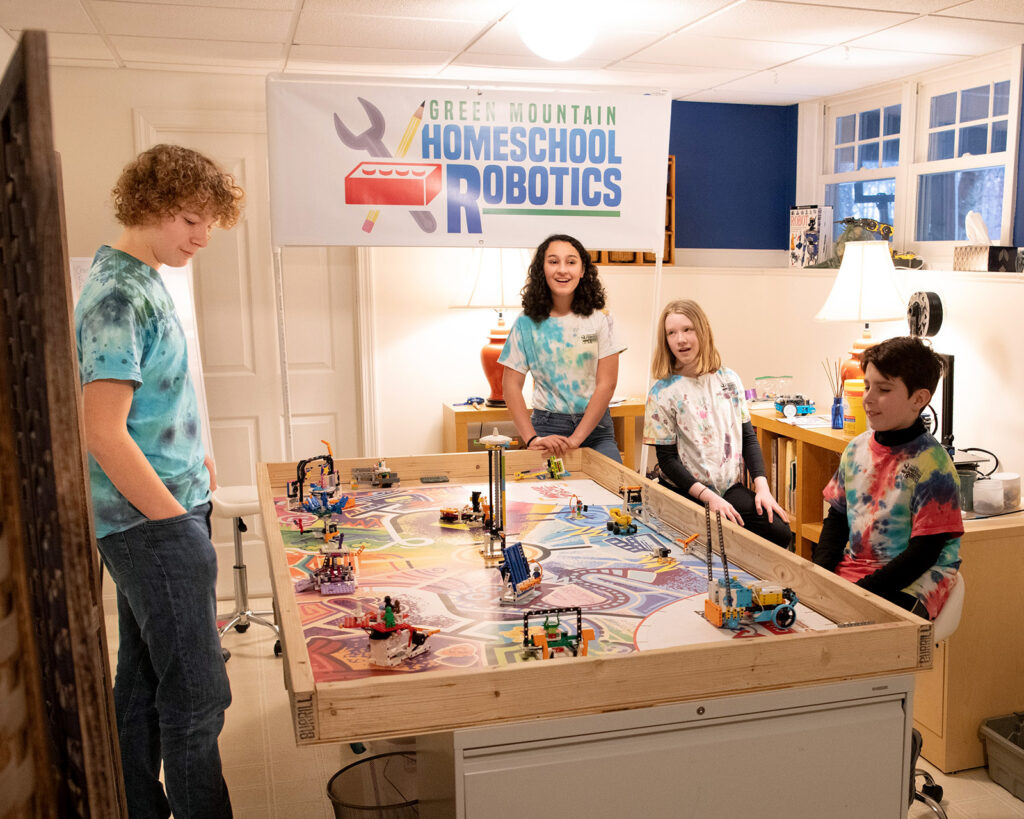
Team Name: Green MTN Homeschool Robotics
What: FIRST Lego League Team
Facebook: LINK
Fundraising Page: LINK
WCAX Story: LINK
How did Green Mountain Homeschool Robotics (GMHR) come to exist… How long has it been around?
The Green Mountain Homeschool robotics team launched two years ago when we became aware of the need for a robotics team that could serve homeschoolers. When researching FIRST Lego League, we watched the video “FIRST Global – Not A Robot”, and we were inspired to tackle the challenge of creating a team so that we could provide this tremendous opportunity for our students.
What is FIRST Lego League and what kinds of activities or challenges are the students engaging with?
FIRST Lego League is an organization that structures teams to compete in four areas— core values, robot design, robotics runs (solving a set of missions within a specific time frame by coding a custom robot), and innovation projects. Each year, an innovation challenge is released asking teams to solve a problem using innovative and inclusive technology.
Why does FIRST Lego League include a service/innovation project? How does it connects to the rest of the program, and what is GMHR’s service project?
FLL includes a service project/innovation project to help students understand how they can connect with their community and use technology to solve the world’s problems. One of the FLL founders has invented so many solutions to benefit others that his goal is to inspire this sort of thinking early on in our students. The Green Mountain Homeschool robotics team has chosen stone carving to answer this year’s challenge of using technology to introduce a favorite hobby to more people. They are creating an app called “See the Stone” for the blind and visually impaired to stone carve as easily as a sighted person. They are partnering with Vermont’s Association for the Blind and Visually Impaired to design this app for blind children to use as part of their upcoming summer camp.
Can you tell us a bit about winning the State Championship, and the upcoming world championships in Houston? What challenges will the students face?
The team was happy about what they accomplished together to win the State Championship. Unlike many teams that have schools behind them, each student on our team represents their own homeschool and small town. They come from four different towns to meet and solve problems together. At the World Championship, the robotics challenges will stay the same, but the challenge of just getting there and raising the necessary funds will be this team’s biggest hurdle. In Texas, there will be thousands of participants and attendees from countries worldwide, and our team is excited to compete at the highest level while also presenting the design for our app “See the Stone” to a much wider audience.
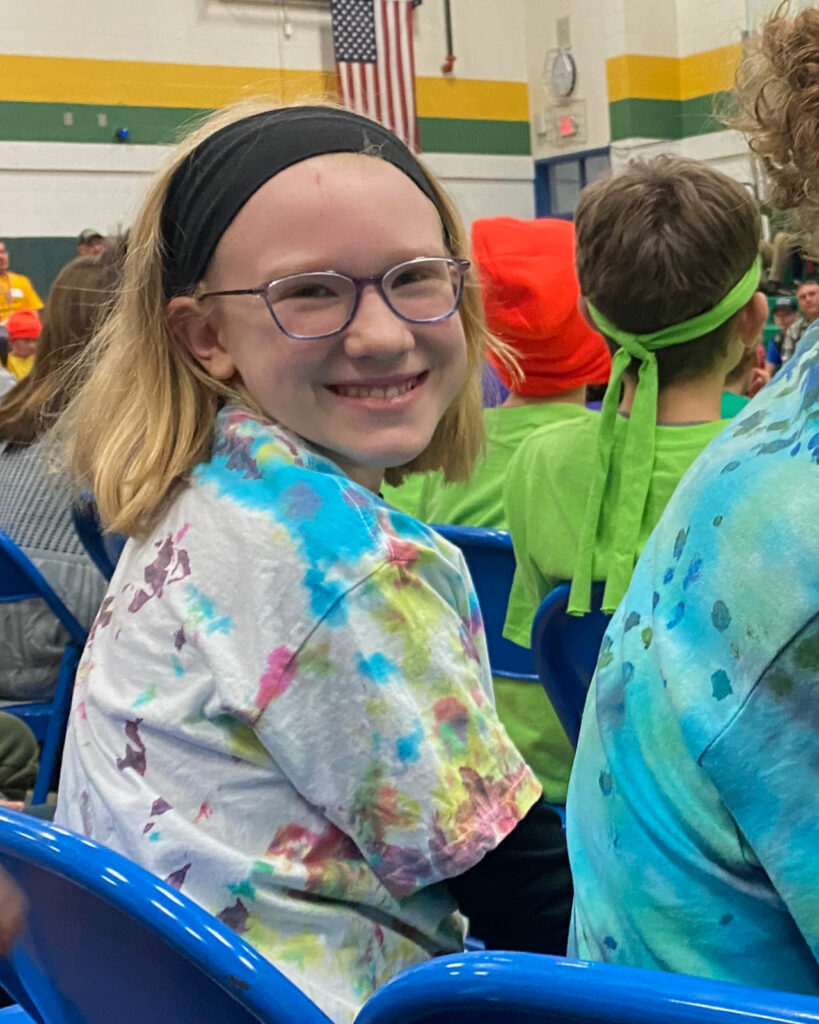
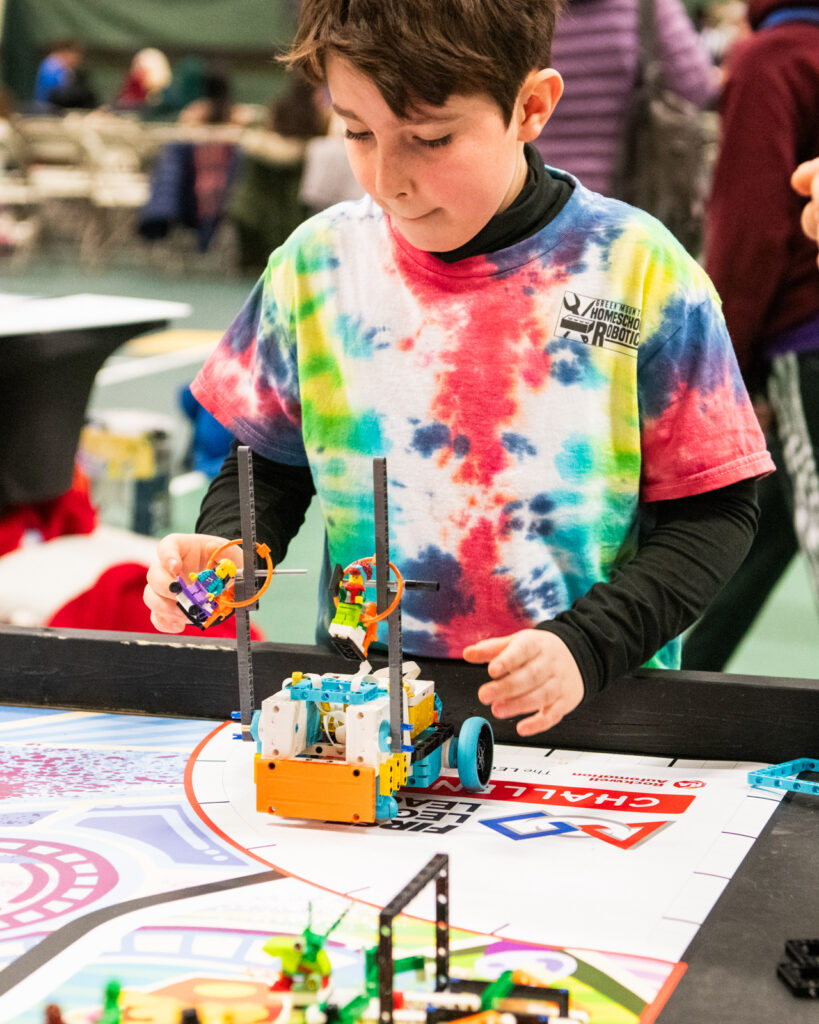

This next set of questions were asked of the four students that currently comprise the Green Mountain Homeschool Robotics Team: Arielle, Emilyn, Ted, and JJ.
How, and when, did you get involved with Green Mountain Homeschool Robotics?
Arielle: I found out about GMHR from a friend who does it, and it sounded interesting. I just joined in 2023.
Emilyn: I was friends with one of the team members before the team started, so when they got the idea to start a robotics team, I joined right away.
Ted: I started in August of 2022 when I was looking for activities to do during the school year.
JJ: I started as a way to refocus just after my grandfather, who had been living with us, passed away.
What are your favorite parts about participating on this team?
Arielle: I loved working with the team to create an innovation project. We have to work together to figure stuff out. I also liked working on the robot and helping code with the team. It is great to celebrate when we break through a tough part.
Emilyn: My favorite parts are everything! I love the challenge of the innovation project each year and the super intense excitement of competing on the robot runs. When the referee calls “Teams, are you ready? 3,2,1, LEGO!” we start the robot runs that we’ve worked so hard to code, and for the next 2 ½ minutes we are so focused, that despite all the crowd cheers, our eyes are only busy following the robot.
Ted: It is super fun, and you make new friends. It is probably the most fun form of learning out there. We also get to learn about and use cool software.
JJ: It combines all my favorite things: good friends, playing with LEGO, and coding simultaneously.
What are some of the things you’ve learned through FIRST Lego League?
Arielle: I learned how to code better and how to program a robot.
Emilyn: I’ve learned how to code and that it can sometimes be fun to be nervous on competition day as we make sure we are where we need to be with all the components of our robot. I’ve also learned that I love giving presentations! It feels just like performing on stage, and theater is another favorite hobby of mine.
Ted: I’ve learned how to code a robot, as well as how to design and build it.
JJ: How to be a good friend and be supportive; I’ve also learned about coding, and with the innovation project, I learned about different aspects of the community in Vermont.
Why is challenging yourself so important?
Arielle: It is important to challenge yourself. If no one ever did there wouldn’t have been anyone to invent things like iPhones and rocket ships or even the U.S.A.
Emilyn: Challenging myself is important because when things are hard to do, I learn more. It is mega fun to challenge myself.
Ted: Challenging yourself helps you build up confidence to try new things. It helps you get better at things that used to seem impossible.
JJ: My brain works so fast that I need a challenge to keep myself engaged. When I challenge myself, I realize that I can do things that are hard.
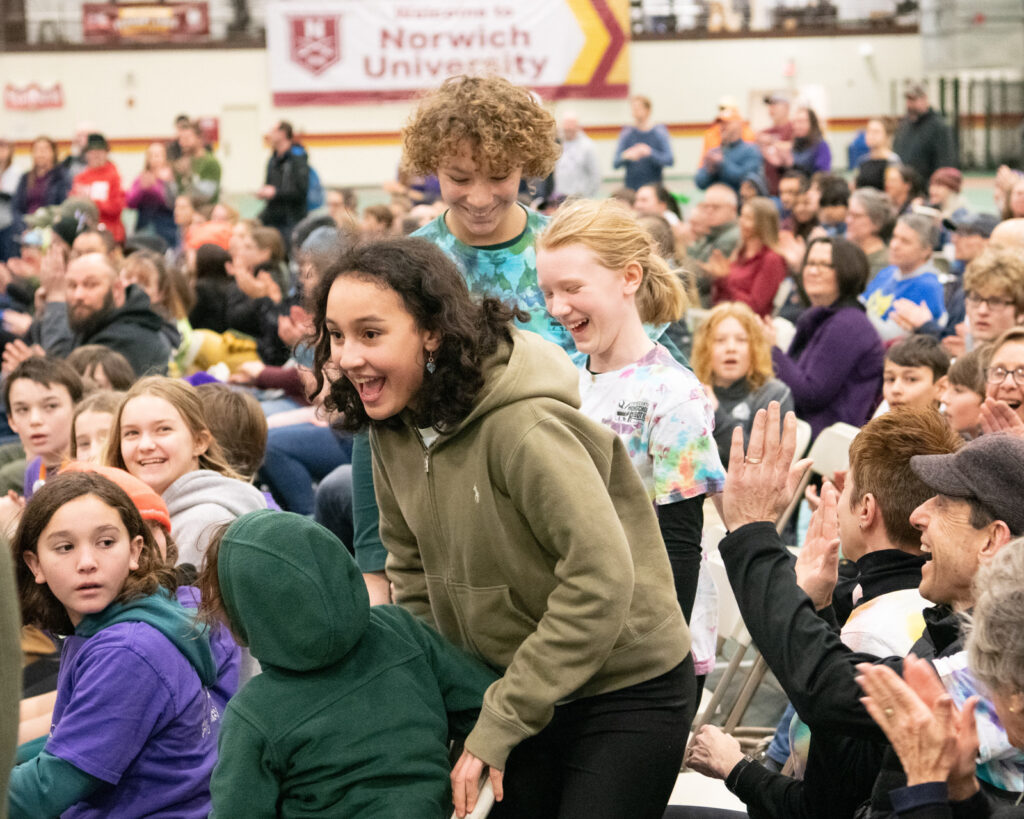

Next, we asked the parents to share their perspective about how getting involved with FIRST Lego League has impacted their families.
How has participating in FIRST Lego League benefitted these young students?
FLL has given each team member a new view of themselves, both as individuals capable of new challenges and as part of a cohesive and supportive team. It has allowed them so many new and valuable experiences, and they have gained many new life skills along the way. They have learned how to be part of a team, how to overcome challenges, and how to problem solve. I’ve seen my son’s confidence grow since joining this team, as I’ve watched him tackle new things that are out of his comfort zone, with his team supporting him. My daughter has excelled at staying calm and focused in the midst of high-stress competition; she has become much more confident in her ability to do hard things and to solve challenging open-ended problems together with her team. Participating in robotics has opened doors of possibility for her, and I’m certain that the skills she is learning will be greatly beneficial for her future career and life goals, no matter what she chooses to pursue.
What is something that you learned, or surprised you, as a coach/parent about First Lego League that other parents/teachers should know about?
We just had no idea how big of a movement the FIRST Lego League is! We’re continually impressed at the skills these kids have and know these experiences will serve them well in life. We didn’t realize how important FIRST Lego League would be to these kids at such a young age and what an impact it would make on their interests and development. The FLL Challenge provides integrated learning across so many areas – engineering, math, art, design, writing, communication, teamwork, innovation, science, coding, presentation skills, networking, community building – the possibilities are endless.
How has participating affected you as a coach/parent? Have you grown or changed in any way?
Learning to work with group dynamics in our own home basement has been valuable for us as a family. It’s a wonderful platform to be able to support kids and families in such a fun yet meaningful outlet. It’s been fun to learn a bit more about coding and technology and to have the kids teach us new things!
Is FIRST Lego League something other parents and teachers should consider getting involved with? Why?
This has been a great experience for my son, and I would definitely recommend it for other families who are on the fence about it. As a homeschooling family, it has been great to be able to participate in a group project, where my son can make friends and develop important teamwork skills. There are so many different facets of the FLL Challenge, from coding to technology development, community relations, and details such as shirts, team support material, and even snacks! There is room for involvement at any level, especially for our small team. Participating in FLL gives our kids valuable skills that will serve them well in throughout their lives and future careers. It shows them a world of possibility and the challenging and the integrated nature of the competition teaches them so much more than we ever anticipated.

Green Mountain Homeschool Robotics recently won the State Championship for FIRST Lego League for the second year in a row, and have been invited to represent Vermont in the World Championships in Houston, TX in April! They are currently fundraising to help make this trip possible. Money raised will be used to cover event registration costs, travel, lodging, and meals. Any extra funds would be used to support the upcoming summer camp for blind students hosted by the Vermont Association for the Blind and Visually Impaired.
You can Contribute Here, and if you’d like to follow along during the World Championships the team plans to post periodic updates on the team’s Facebook Page.
